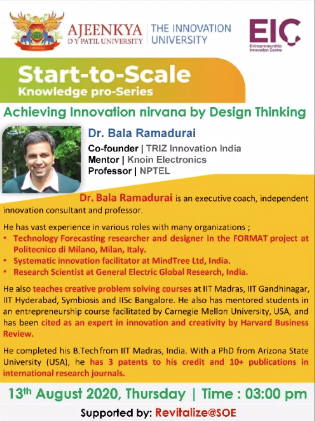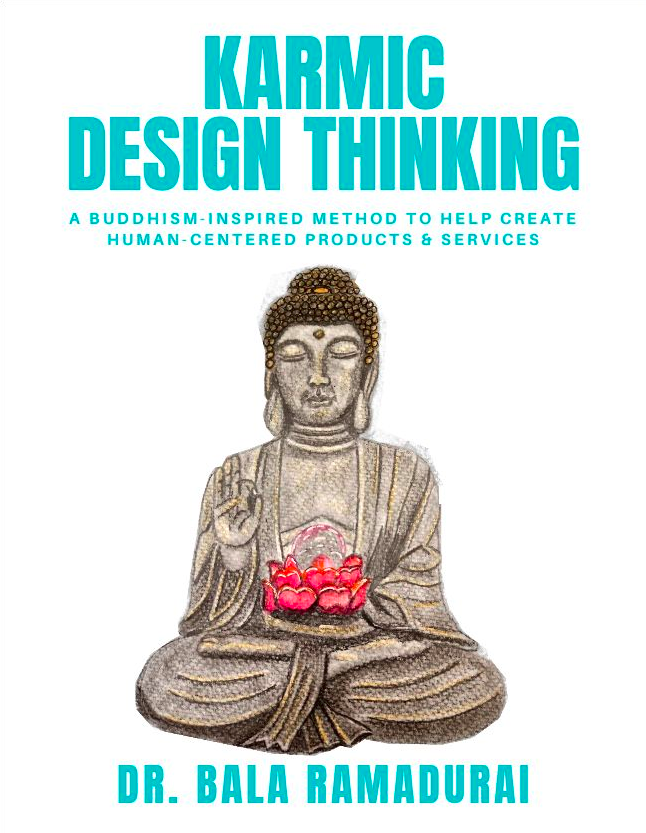2020-08-17
On 13th Aug, 2020, I interacted with students from the Ajeenkya D Y Patil University, Pune. The talk is part of a Start to Scale talk series to help students scale up their business idea. In my opinion, design thinking will go a long way in helping early stage startups in understanding their customers.
Let me tell you two startup stories: Quick Fire, Slow Burn and Quick Try, Sure Improve.

Story 1: Tiger and his friends from college started up a company to develop a product. They started with a prototype and demonstrated the prototype to a few of their buddies. Then, they also showed it to their professor, who gave a few more tips to improve the product. They spent the next six months developing the prototype. Whenever the talk of approaching a customer came, both of them dropped it reasoning that it would turn off customers if they saw something that was not prime-time ready yet. Six more months, customers talked to: Zero. Any opportunity to showcase their product came, they would stop themselves by saying that the product wasn’t ready for limelight. They had burnt through cash and felt the pressure of no revenue. Their friends had moved to cushier jobs and fat pay cheques, while Tiger and his friends suffered through. At some point, the bow broke and Tiger applied to a corporate job and his co-founders applied to Universities for their advanced degrees. Their startup dream went bust.
Story 2: Rocky and Gal dreamt of having a startup. They found a specific problem that they faced as students. They reasoned that if they faced it, there would be other students who would have faced it too. So, they donned the hats of observers and watched their friends and other students in their locality. Their hunch was right–the students indeed had the same problem that they had. They reasoned out why the problem persisted and looked at what the students were using to resolve the situation. They found out the real world constraints that the students had and also examined the situation from their own point of view, as entrepreneurs. Now, they started building a prototype to test if their hunch was indeed right. They went to the students armed with their prototype and got a lot of early stage feedback about how to improve the product. The approach created a buzz among the students about Rocky and Gal’s new product. They relentlessly kept improving their product through interaction with many students. Rocky and Gal felt that it was time to startup a venture and invest some real money and make their product.
Which approach do you think you would like to adopt for your startup idea?
Clue: The second one is based on Design Thinking.
I thank Dr. Pradeep Desai and the organizers for inviting me to interact with the students.






